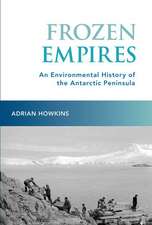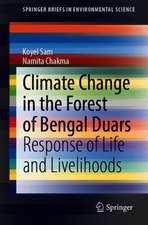Ideal Ecosystem & Several Problems of Our Time
Autor Yury Kameniren Limba Engleză Hardback – feb 2016
Preț: 1099.61 lei
Preț vechi: 1412.25 lei
-22% Nou
Puncte Express: 1649
Preț estimativ în valută:
210.44€ • 218.89$ • 173.73£
210.44€ • 218.89$ • 173.73£
Carte disponibilă
Livrare economică 24 martie-07 aprilie
Preluare comenzi: 021 569.72.76
Specificații
ISBN-13: 9781631173004
ISBN-10: 1631173006
Pagini: 175
Ilustrații: illustrations
Dimensiuni: 180 x 260 x 16 mm
Greutate: 0.44 kg
Editura: Nova Science Publishers Inc
Colecția Nova Science Publishers, Inc (US)
ISBN-10: 1631173006
Pagini: 175
Ilustrații: illustrations
Dimensiuni: 180 x 260 x 16 mm
Greutate: 0.44 kg
Editura: Nova Science Publishers Inc
Colecția Nova Science Publishers, Inc (US)
Cuprins
Preface; Our World is Changing; Living Matter; Living Vortex; Ideal Minimal Ecosystem; Modeling & Minimal Building Blocks ; Allometry & Metabolic Surface; Size Spectra & Total Surface Area of Living Matter of the Ocean; A Comparison of Eight Aquatic Ecosystems; Size Structure Stability of Phytoplankton Assemblage in a Subtropical Lake; The Long-term Patterns of Phytoplankton Taxonomic Size-structure ; Comparison of Taxonomic Size-Structure of Several Aquatic Ecosystems ; Consistency of Taxonomic Size-structure of Major Phytoplankton Phyla ; A Multisided Analysis of Living Matter ; High Orderliness of Phytoplankton Taxonomic Structure; A XX Century Interpretation; Res Public Biosphere; References; Index.























